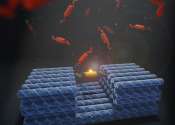Cut and stretch assay reveals resistance genes
Which antimicrobial resistance genes are present in bacteria, for example in a hospital ward? For laboratories with limited financial resources characterizing bacterial DNA is difficult, as this often requires expensive equipment. ...









